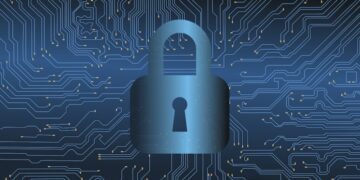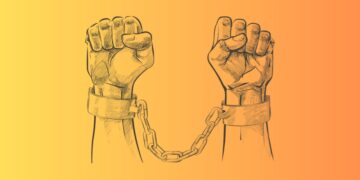Children’s online safety is the top priority of every parent. Today, it’s very essential to ensure the safety of children when using the internet. That’s why we have curated a proper guide for every parent. Information is becoming an increasingly social place, so its use is sometimes necessary for your children. However, this is not always a safe place. Your child’s internet safety is very important, but more importantly, pay attention to your child.
Unfortunately, when children are detained, they are often more vulnerable to cyber threats such as harassment or cyberbullying. Due to neglect, lack of parent’s support, low self-esteem, and drug abuse, children may be more likely to engage in risky online activities than other children. Parenting harassment, sexting, and online pranks are all things to consider when caring for children when using the internet.
Risks of the internet that parents need to worry about
The internet is a very dangerous place, especially for children and teenagers. Many parents worry about how to protect their children from online harm or unnecessary contact. This may include harassment, bullying, stalking, or pornography. It is important to educate your children about the dangers of internet use and actively monitor their use of the internet. Educate your children to protect themselves online.
1. Cyberbullying
Cyberbullying includes sending hate threats and even death threats to children, lying to them online, posting malicious comments on their social media profiles, or creating a website to impress their appearance. Usually, cyberbullying is different from school bullying. Teachers cannot interfere with the internet. Some cyber police pretend to be victims and send threatening messages to others. Cyberbullies are also posting derogatory videos of other kids they don’t like.
2. Cyber predators
Today, online predators use children’s innocence, lack of adult supervision, and abuse their trust to track children online, which may lead children into dangerous contact in real life. These predators are hidden in social media and games. The platform that attracts children is also an anonymous virtual place that encourages cyberbullying. There, they use the children’s innocence along with their imagination. The best protection is to talk to your children regularly about what happens in their daily lives.
3. Phishing
Phishing refers to the use of email to trick people into clicking on malicious links or attachments. Phishing emails and SMS scams may pop up at any time, but the cybercriminals who create them will track websites that are popular with children, and collect information such as email addresses, friend names, etc., to maintain their attack methods. Teach your children not to click on emails or text messages from strangers, and be aware of messages that seem “inappropriate”.
4. Exposing private information
Children still do not understand social constraints. They publish personal data on the internet, which should not be made public. This can be anything, from photos of embarrassing personal moments to your home address or family vacation plans. Most content is posted by your child in public. This means you can see it too, remind them that if your parents can see it, so do other people. However, be honest with your child and understand the social boundaries and what they mean for your child and the whole family.
5. Malware
Malware is computer software that is installed and performs malicious operations on the computer without the user’s permission. That includes stealing personal information from your computer resulting in performance degradation. Phishing is one of them, but there are other techniques, such as persuading victims to download malicious software disguised as games, which is especially tempting for children.
Educating children is your best defense, but having comprehensive cross-device software can help protect your children’s computer from any malware. In addition, many online safety products also include parental controls that can help you establish a safe internet environment for your children.
A parent’s guide to internet safety
Parents should always monitor the activities of their children online and take remedies to ensure their safety on the internet. Here is a perents’s guide to keeping children safe online.
1. Have open communication
You should always have an open conversation with your children about who they communicate with. Make sure they understand the value of friendly and supportive interaction, and content like inappropriate is unacceptable. If this affects your children, please ask them to tell you or any trusted family member immediately. If your child is upset or unwilling about online activities or cyberbullying, stay alert. Work with your child to develop rules about how, when, and where to use these devices.
2. Spending time with them
Create an environment for your children to have secure and good interactions with friends, and family. Connecting with others is more critical than ever in the meanwhile, and this will be an incredible chance for kindness in these “digital interactions”. Help your children understand and keep away from incorrect information and age-irrelevant content material, which can increase tension approximately. Spend time together along with your children to discover age suitable apps, video games, and different online entertainment.
3. Protect them with technology
Make sure your child’s device has the latest antivirus and security software installed, and their privacy settings are turned on. Always keep the webcam off when not in use. For children, tools such as parental controls can help maintain a positive online experience. Also, you should be aware of the free educational resources on the internet. There, your child does not need to provide private information to use these resources.
4. Motivate healthy online habits
Always track their good behavior during online calls. Encourage your children to treat their classmates with kindness and respect, pay attention to the clothes they wear and do not participate in video calls in the bedroom. View school policies and hotlines, and report cyberbullying or inappropriate online content. Since children are spending more time online, they may see more ads promoting unhealthy foods and age-appropriate materials. Help them discover online advertisements and take this opportunity to jointly find out the problems with some of the negative news you see.
5. Create fun environment
Staying at home may be a great opportunity for your child to express opinions online, share opinions, and listen to their queries. Encourage your children to use digital tools that move them, such as online videos and video games for children that require physical activity. Remember to balance online and offline activities, including outdoor activities, as much as possible.
6. Develop your network with your child’s friends and parents
If possible, please set up a group chat with your parents in your child’s friendship group because this can be a very useful place to warn each other of your child’s internet usage problems. And also a useful place to fight against the well-known “children”. As a parent group, you can set limits or restrictions because everyone says the same things to their children, so you won’t feel unfair.
7. Emphasize on digital footprint
Explain to your children that whether they trust their friends or not, most parents will check their children’s digital devices because parents need to make sure their children are doing the right thing and are safe. Ask your child what they have posted on the internet recently and what messages they have sent.
Remind them of the persistence of fingerprints and how messages or pictures affect them now and in the future. You should also explain the impact of annoying digital messages on the people who receive or send them. Explain to them that they are responsible for their online behavior and make sure they understand how your information may affect themselves and others.
Final words
Technology is part of the lives of children, and they have nowhere to go without it. Children go online earlier and spend more and more time enjoying digital treasures. Challenges arise when children acquire digital skills before they acquire important life skills. Although the internet has all its advantages, it can also pose a threat, especially to children and teenagers. Without adequate safeguards, children may also face other risks, such as exposure to scams, racism, or pornography. In the case of childcare, this may also be intentional or unintentional damage, for example, if online contact with friends is not adequately monitored.



































































































































































































